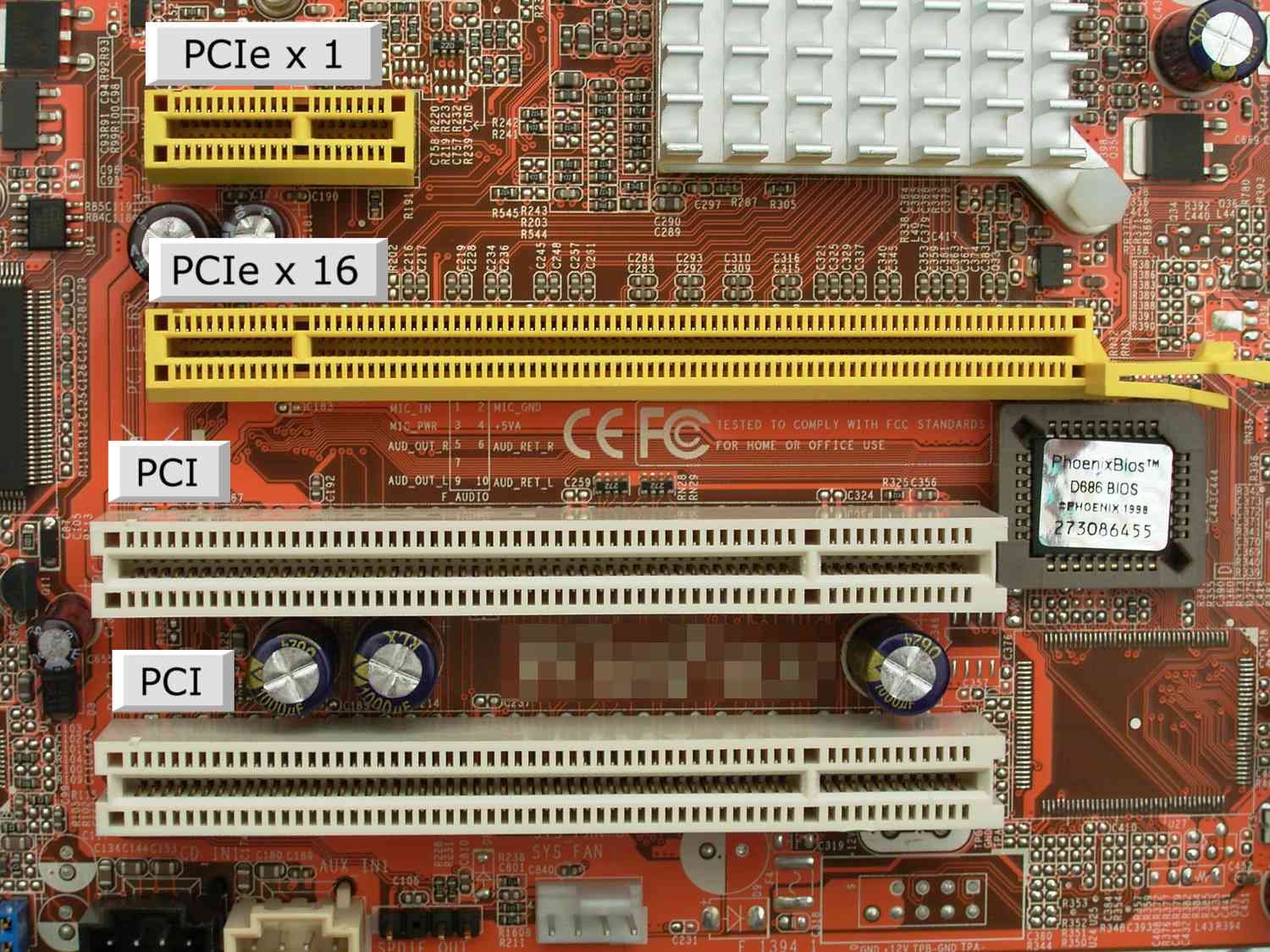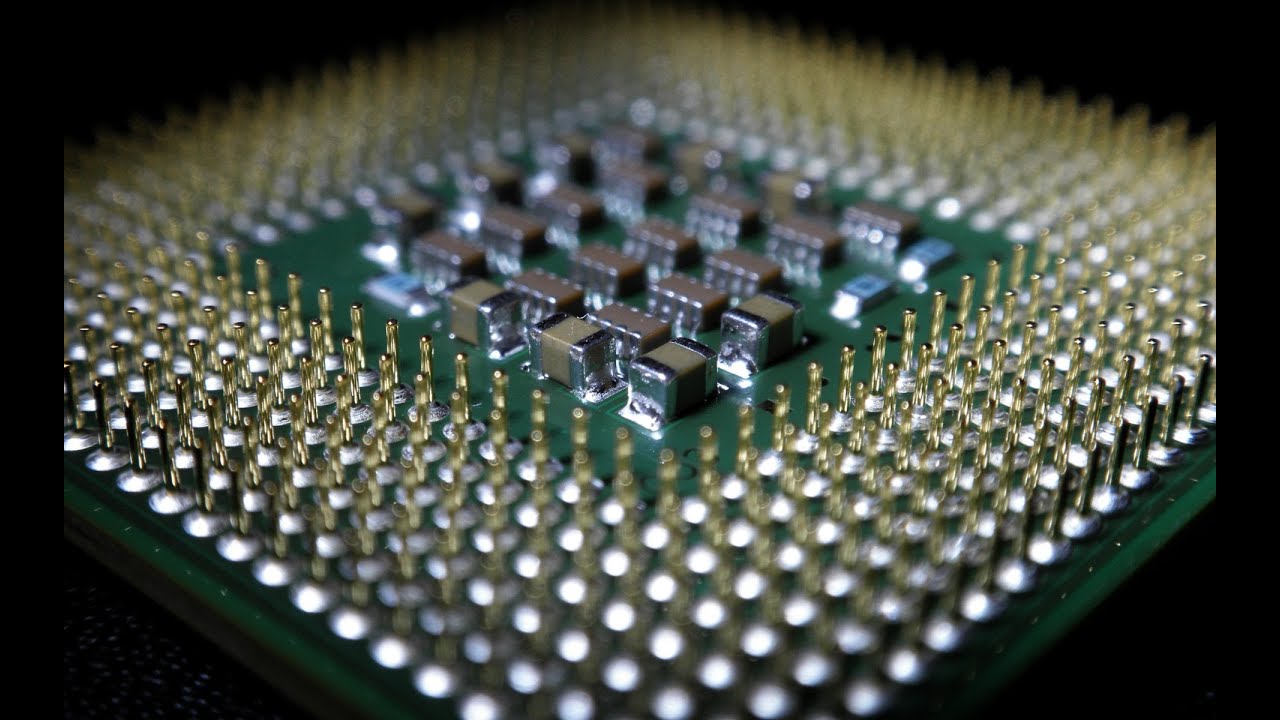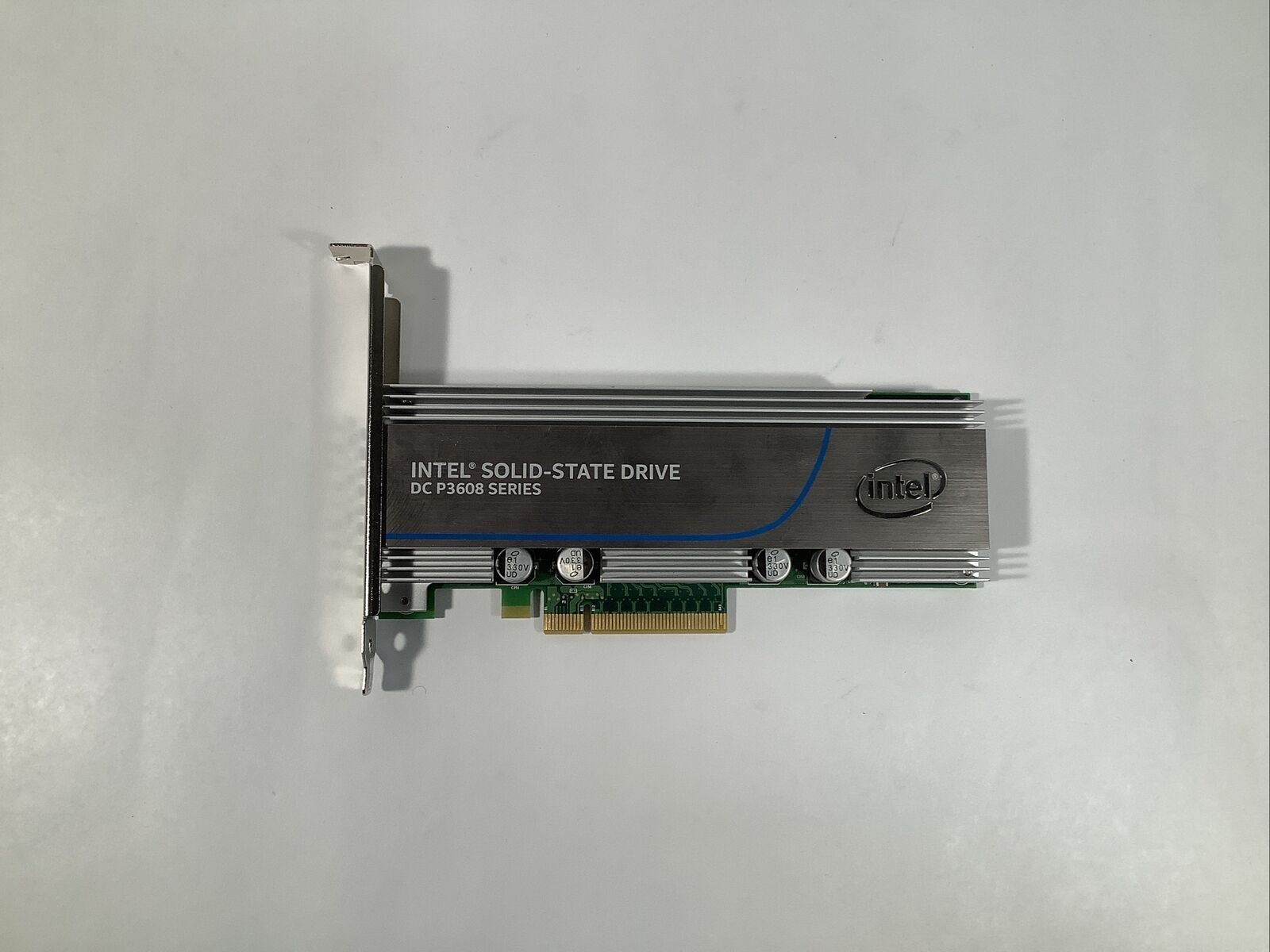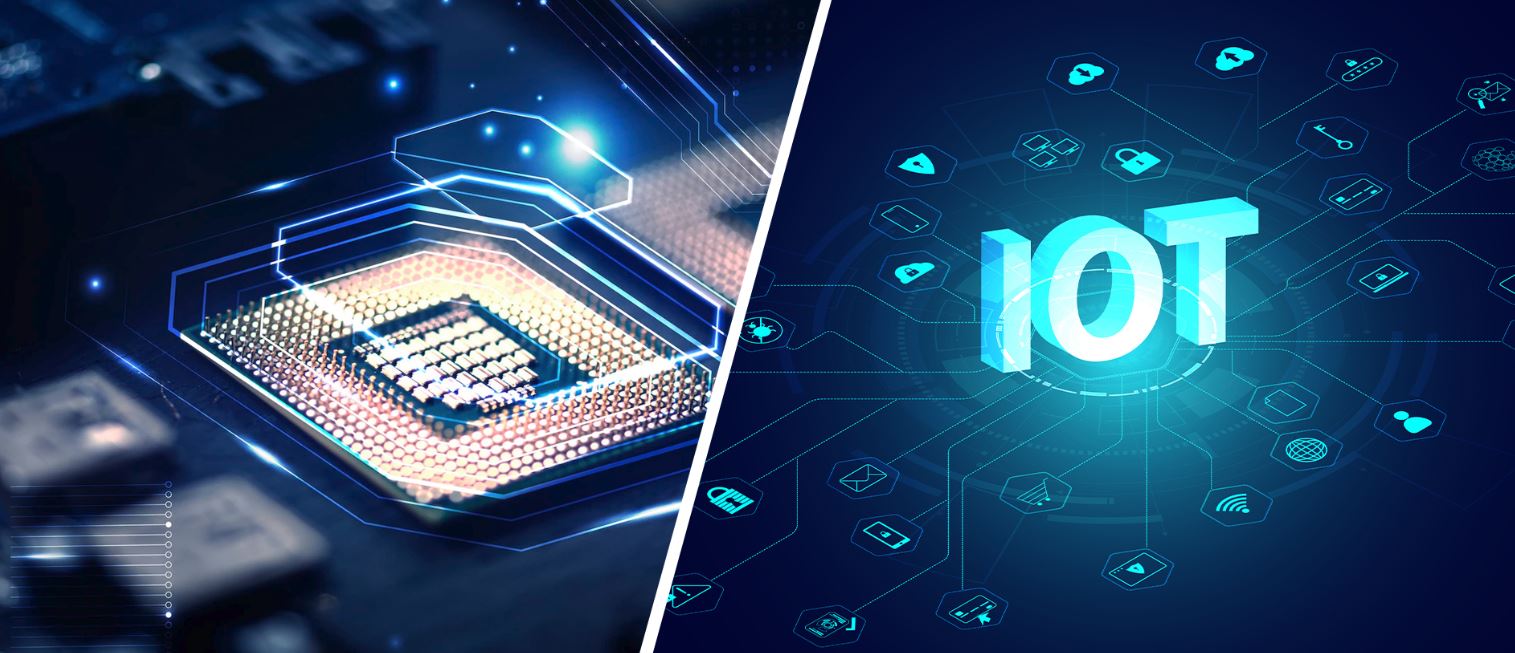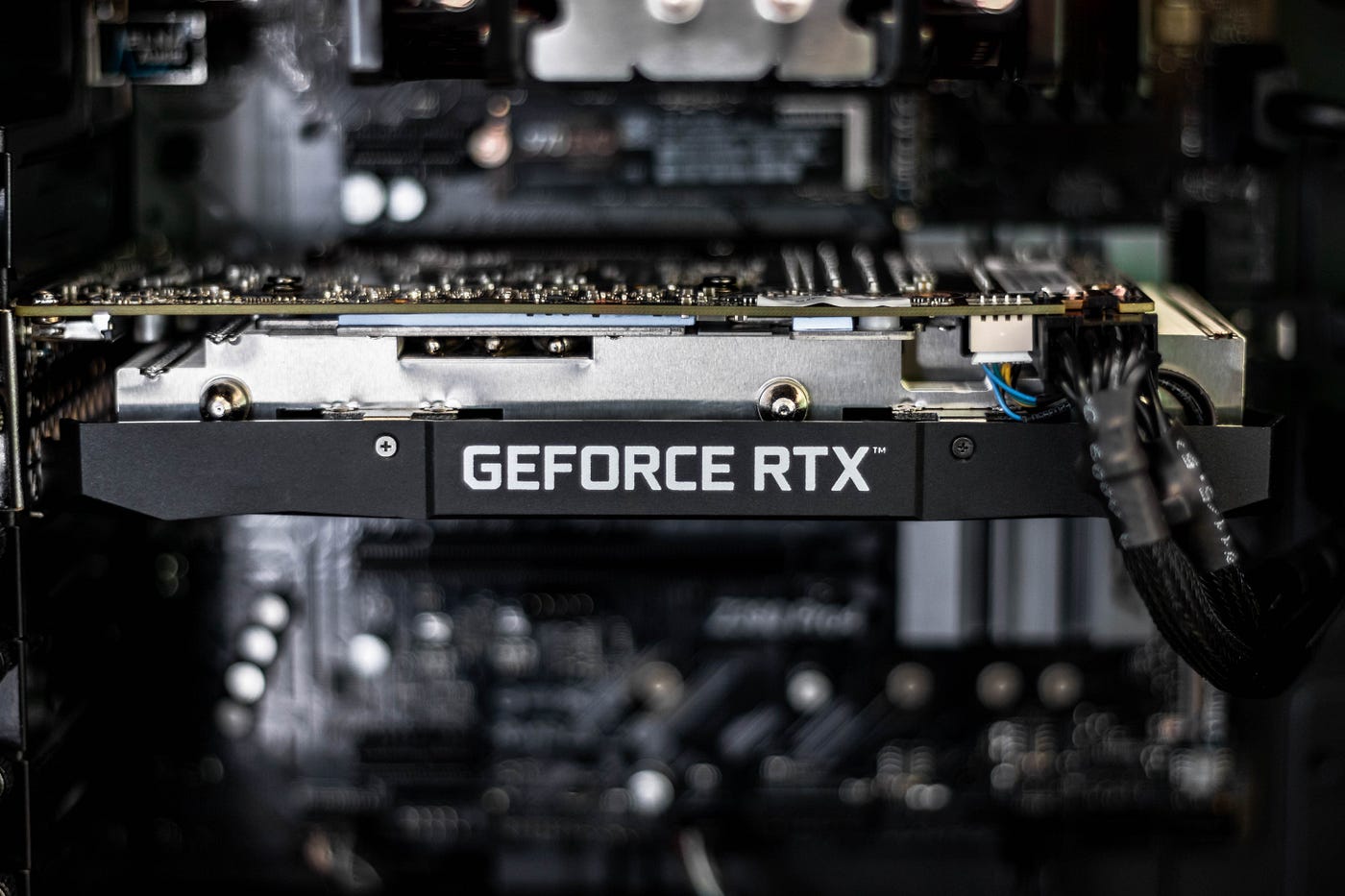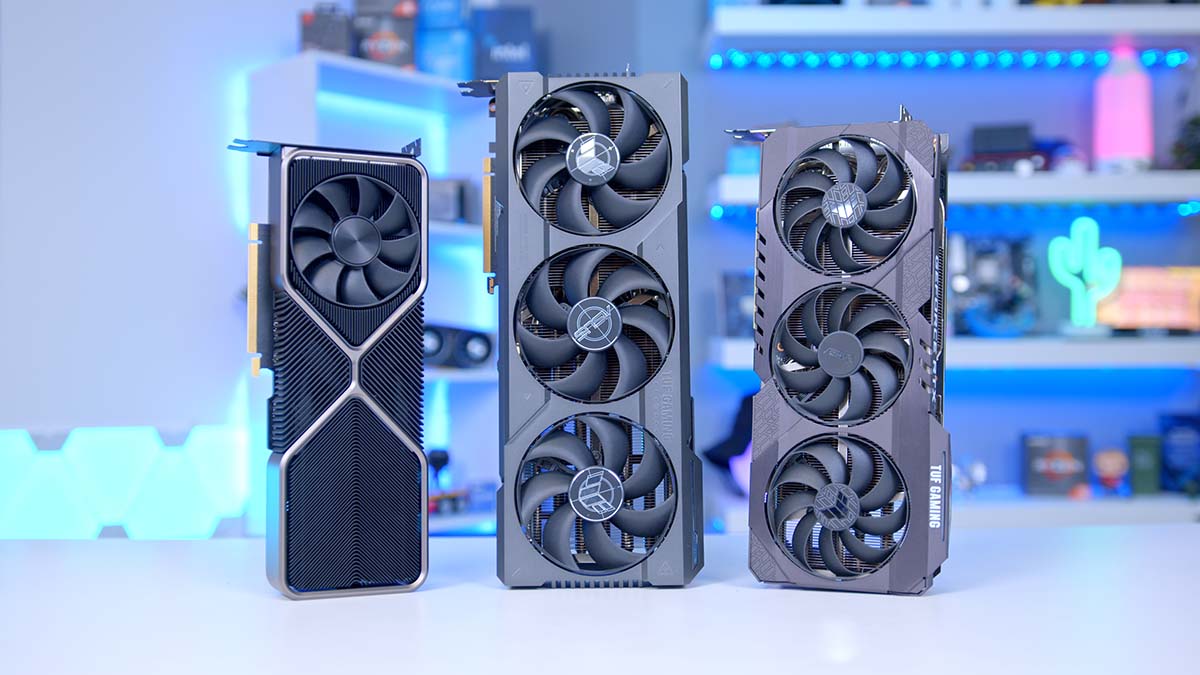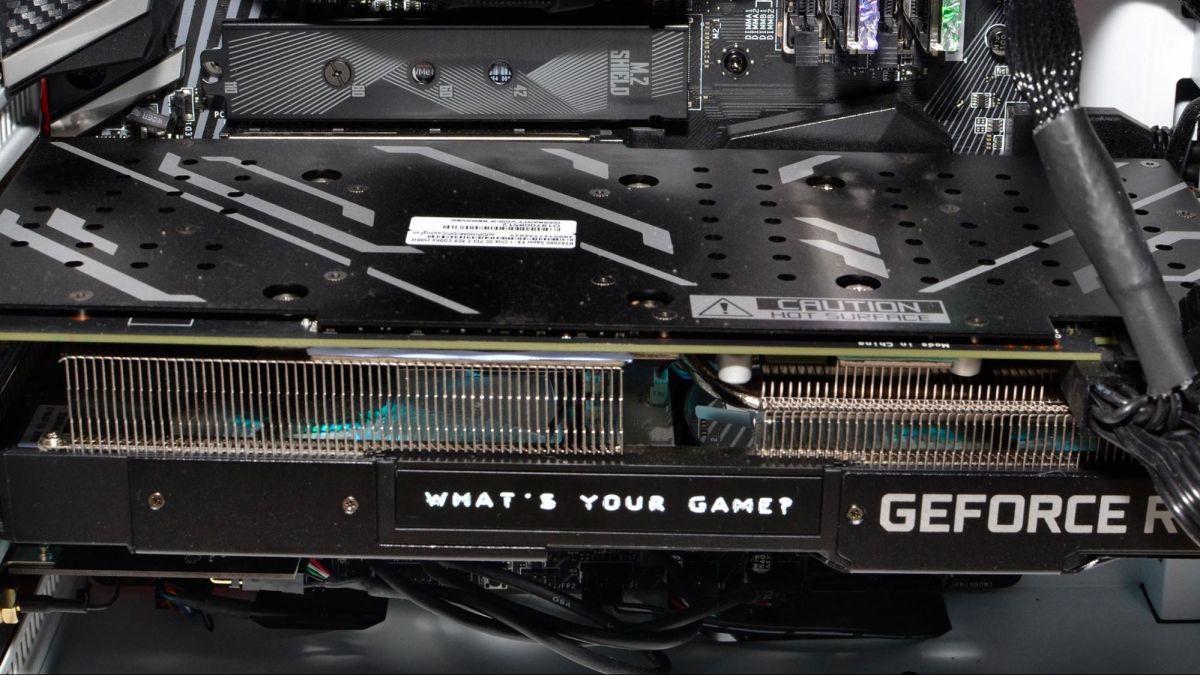Introduction
The interconnection between devices and the CPU is critical for the smooth functioning of a computer system. This connection enables seamless communication and data transfer between various components, ensuring efficient processing and execution of tasks. Understanding how these devices interconnect is essential for troubleshooting, upgrading, and optimizing computer performance.
At the heart of this interconnection lies the motherboard, a central circuit board that houses and connects the various hardware components of a computer. The motherboard provides a platform for the devices to communicate with one another and with the CPU.
In this article, we will explore the components responsible for handling the interconnection between devices and the CPU. We will delve into the functions of the CPU socket, system bus, memory controller, northbridge, southbridge, expansion slots, and peripherals. By gaining insights into these components, you will have a better understanding of how the interconnection process works and how to troubleshoot any issues that may arise.
The interconnection between devices and the CPU is a complex and intricate process. Each component plays a vital role in ensuring proper communication and data transfer. By examining these components individually, we can gain a clearer picture of how they come together to create a cohesive system.
So, let’s begin our journey into the world of device and CPU interconnection, and explore the fascinating components that make it all possible. By the end of this article, you will have a deeper understanding of the inner workings of a computer system and be better equipped to handle any interconnection-related challenges that may arise.
The Motherboard
The motherboard is the main circuit board of a computer system and serves as the foundation for all other components. It provides the platform for communication between the CPU, memory, storage devices, and other peripherals. The motherboard acts as a central hub, facilitating the exchange of data and instructions.
One of the key features of a motherboard is the CPU socket, which is the physical interface between the CPU and the motherboard. The socket ensures that the CPU is properly seated and connected to the motherboard, allowing for smooth communication and data transfer. Different CPUs require different socket types, so it’s crucial to choose a compatible motherboard when upgrading or building a new system.
In addition to the CPU socket, the motherboard also contains the system bus. The system bus provides pathways for data to travel between the CPU, memory, and other devices connected to the motherboard. It acts as a communication highway, enabling the efficient transfer of information.
Furthermore, the motherboard is equipped with a memory controller, which manages the flow of data between the CPU and the system memory. The memory controller plays a vital role in optimizing the overall system performance by ensuring fast and reliable access to data.
The motherboard typically consists of two main chips: the northbridge and the southbridge. The northbridge is responsible for connecting the CPU to high-speed peripherals, such as the memory and graphics card. On the other hand, the southbridge handles the lower-speed peripherals, including USB ports, audio interfaces, and storage devices. These two chips work together to provide efficient interconnection between the CPU and various peripherals.
Moreover, the motherboard offers expansion slots where additional components can be connected to enhance the system’s capabilities. Expansion slots allow for the installation of graphics cards, sound cards, network cards, and other expansion cards. These slots utilize specific interfaces, such as PCI, PCI Express, or AGP, to establish a connection between the motherboard and the expansion cards.
To summarize, the motherboard serves as the backbone of a computer system, providing the necessary interconnection between the CPU, memory, storage devices, and peripherals. Understanding the components and features of the motherboard is crucial for building and maintaining a well-functioning and compatible system.
CPU Socket
The CPU socket, also known as the CPU slot or CPU connector, is a physical interface on the motherboard that connects the CPU to the rest of the computer system. The CPU socket plays a crucial role in establishing a stable and reliable connection between the CPU and the motherboard.
When choosing a CPU for a computer system, it is important to select one that is compatible with the motherboard’s CPU socket. Different CPU manufacturers, such as Intel and AMD, use different socket types for their processors. Therefore, it is necessary to ensure that the CPU socket on the motherboard matches the socket type required by the chosen CPU.
The CPU socket consists of a series of pins or contacts that align with the corresponding pins on the CPU. This alignment ensures that the electrical signals between the CPU and the motherboard are properly transmitted. Additionally, the socket provides mechanical support to hold the CPU in place, preventing accidental disconnection due to vibrations or movement.
The CPU socket also includes a locking mechanism to secure the CPU in position. This mechanism varies depending on the socket type but generally involves a lever or latch that can be easily manipulated to lock or unlock the CPU. This feature ensures that the CPU remains securely attached to the motherboard, minimizing the risk of damage during operation.
Furthermore, the CPU socket is designed to provide the necessary power and grounding connections for the CPU. The socket has multiple power pins to deliver the required voltage and current to the CPU. This ensures that the CPU receives a stable and reliable power supply, which is essential for its proper functioning.
Additionally, the CPU socket may include other features such as heat spreaders or thermal solutions to ensure that the CPU remains at optimal operating temperatures. These features help dissipate the heat generated by the CPU and maintain its performance and longevity.
In summary, the CPU socket is a fundamental component of the motherboard that facilitates the connection between the CPU and the rest of the computer system. It ensures proper alignment, electrical transmission, power supply, and thermal management for the CPU. Understanding the CPU socket’s compatibility and functionality is crucial when choosing and installing a CPU for a computer system.
System Bus
The system bus is a critical component of the interconnection between the CPU, memory, and other devices in a computer system. It acts as a communication pathway that allows data to be transferred between these components. The system bus consists of three main types of buses: the data bus, address bus, and control bus.
The data bus is responsible for carrying data between the CPU, memory, and other devices. It is a bi-directional bus, meaning that it can transmit data in both directions. The width of the data bus determines the amount of data that can be transferred simultaneously. A wider data bus allows for faster data transfer since more bits can be transmitted at once.
The address bus is used to specify the memory location or device address from which data is being read or written. It carries the addresses of instructions and data between the CPU and memory. The size of the address bus determines the maximum amount of memory that can be accessed by the CPU. A larger address bus allows for a larger memory address space.
The control bus carries control signals that regulate the timing and flow of data within the system. It includes signals such as read, write, and interrupt signals, as well as clock signals that synchronize the operations of all components in the system.
The system bus operates at a certain clock speed, which determines the rate at which data can be transferred. This clock speed is measured in megahertz (MHz) or gigahertz (GHz) and represents the number of cycles per second. A higher clock speed allows for faster data transfer, resulting in improved system performance.
The bus architecture can vary depending on the computer system’s design. Older systems often featured a front-side bus (FSB), where the CPU communicates directly with the memory and other devices. Modern systems, on the other hand, employ a point-to-point bus architecture, such as Intel’s QuickPath Interconnect (QPI) or AMD’s HyperTransport, which provide dedicated connections between the CPU and other components.
In summary, the system bus serves as the communication pathway that enables data transfer between the CPU, memory, and other devices. By understanding the different types of buses and their functions, you can gain insight into how the system bus facilitates the efficient exchange of data within a computer system.
Memory Controller
The memory controller is a crucial component responsible for managing the flow of data between the CPU and the system memory. It acts as an intermediary, facilitating fast and reliable access to data stored in the memory modules.
The primary function of the memory controller is to handle memory requests from the CPU. When the CPU needs to read or write data from or to the memory, it sends a request to the memory controller. The memory controller then coordinates the data transfer between the CPU and the appropriate memory modules.
To achieve optimal performance, modern CPUs often integrate the memory controller directly onto the CPU chip itself. This integration reduces latency and improves data transfer speed by eliminating the need for the CPU to communicate with an external memory controller.
The memory controller also plays a vital role in managing the memory hierarchy. It determines how data is allocated in different levels of cache memory, which is a faster and smaller form of memory located closer to the CPU. By intelligently managing cache memory, the memory controller can ensure that frequently accessed data is readily available, reducing the need to retrieve data from slower system memory.
Furthermore, the memory controller is responsible for ensuring data integrity and error correction. It checks for errors during data transfers and utilizes error correction codes (ECC) to detect and correct any errors that may occur. This ensures the reliability and accuracy of data stored in the memory modules.
The memory controller also plays a role in managing the timing and frequency of memory operations. It sets memory timings and determines the clock speed at which the memory modules operate. These settings impact the overall system performance and stability.
In addition to its primary role in managing memory operations, the memory controller also handles other tasks such as memory address translation and memory mapping. It translates virtual memory addresses used by the CPU into physical memory addresses used by the memory modules. It also maps memory addresses to specific locations in the physical memory modules.
In summary, the memory controller is a critical component that manages the flow of data between the CPU and the system memory. Its functions include handling memory requests, managing the memory hierarchy, ensuring data integrity, setting memory timings, and handling memory address translation and mapping. Understanding the role of the memory controller is essential for optimizing memory performance and ensuring the efficient operation of a computer system.
Northbridge
The Northbridge is a key component of the computer motherboard that serves as the bridge between the CPU and high-speed peripherals. It plays a crucial role in facilitating efficient data transfer between the CPU and components such as the memory and graphics card.
One of the main functions of the Northbridge is to connect the CPU to the memory modules. It provides a high-speed data pathway, known as the front-side bus (FSB), through which the CPU communicates with the memory. The Northbridge coordinates the transfer of data between the CPU and the memory, ensuring fast and reliable access to stored information.
In addition to managing memory operations, the Northbridge also handles communication with the graphics card. It provides a dedicated interface, such as AGP (Accelerated Graphics Port) or PCI Express, for connecting the graphics card to the CPU. This allows the CPU to communicate directly with the graphics card, facilitating the rendering and display of graphics-intensive applications.
Furthermore, the Northbridge provides support for other high-speed peripherals, such as the system’s main bus or interconnect technology. For example, it may include support for technologies like HyperTransport or QuickPath Interconnect, which provide high-bandwidth connections between the CPU and other components.
The Northbridge is also responsible for managing the system’s memory controller hub (MCH), which controls the flow of data between the memory modules and the CPU. The MCH ensures that data is properly routed between the CPU’s memory controller and the appropriate memory modules, optimizing performance and reliability.
In older motherboard designs, the Northbridge was a separate chip located near the CPU socket. However, with the advancement of technology, modern CPU architectures have integrated the Northbridge functions directly onto the CPU chip itself. This integration, known as a system-on-a-chip (SoC), provides even faster and more efficient communication between the CPU and peripherals.
It is important to note that the Northbridge is often complemented by another component called the Southbridge. While the Northbridge handles the high-speed peripherals, the Southbridge connects to lower-speed peripherals such as USB ports, audio interfaces, and storage devices. Together, the Northbridge and Southbridge provide a comprehensive interconnection solution for the CPU and various peripherals on the motherboard.
In summary, the Northbridge acts as a bridge between the CPU and high-speed peripherals, facilitating efficient data transfer and communication. It connects the CPU to the memory modules, supports the graphics card, and manages the system’s memory controller hub. Understanding the role of the Northbridge is essential for optimizing system performance and ensuring smooth operation of a computer system.
Southbridge
The Southbridge is a component of the computer motherboard that complements the Northbridge by connecting low-speed peripherals to the CPU. It handles communication with peripherals such as storage devices, USB ports, audio interfaces, and networking devices.
A primary function of the Southbridge is to manage the input/output (I/O) operations of the peripheral devices connected to the motherboard. It provides the necessary interfaces and protocols for these peripherals to interact with the CPU and the rest of the system.
One of the key responsibilities of the Southbridge is to support storage devices, such as hard drives and solid-state drives. It includes interfaces like SATA (Serial ATA), IDE (Integrated Drive Electronics), or SCSI (Small Computer System Interface) that facilitate the connection and data transfer between the storage devices and the CPU.
The Southbridge also manages the USB (Universal Serial Bus) ports on the motherboard, which are essential for connecting a wide range of peripheral devices. It provides the necessary controller and protocols to enable data transfer between the CPU and USB devices such as keyboards, mice, printers, and external storage devices.
In addition, the Southbridge is responsible for handling audio interfaces on the motherboard. It supports audio codecs, allowing for the input and output of sound signals. The Southbridge ensures that audio data is processed and delivered to speakers or headphones with minimal delay and high quality.
Furthermore, the Southbridge manages networking capabilities on the motherboard. It provides the necessary controller and interfaces for connecting to Ethernet or Wi-Fi networks. The Southbridge ensures that network data is properly transmitted and received, allowing for seamless internet connectivity.
Another important role of the Southbridge is to handle system power management. It includes features such as ACPI (Advanced Configuration and Power Interface), which enable the operating system to control power-saving functions, such as sleep mode and hibernation. These power management features help optimize energy consumption and extend battery life in portable devices.
It is worth noting that the Southbridge is often integrated alongside the Northbridge as part of a single chip or package. This integration, known as a platform controller hub (PCH) or input/output controller hub (ICH), simplifies motherboard design and enhances overall system performance.
In summary, the Southbridge acts as the interface between the CPU and low-speed peripheral devices on the motherboard. It manages storage devices, USB ports, audio interfaces, networking capabilities, and power management functions. Understanding the role of the Southbridge is essential for ensuring proper connectivity and functionality of various peripherals in a computer system.
Expansion Slots
Expansion slots are an essential feature of the motherboard that allow users to expand and enhance the capabilities of their computer systems. These slots provide a way to connect expansion cards, also known as add-on cards, to the motherboard, expanding the functionality and performance of the system.
There are several types of expansion slots commonly found on motherboards, including PCI (Peripheral Component Interconnect), PCIe (PCI Express), and AGP (Accelerated Graphics Port). Each type of slot has specific characteristics and is designed to accommodate different types of expansion cards.
The PCI slots are versatile and can support a wide range of expansion cards, such as sound cards, network cards, and video capture cards. They provide a reliable and standardized interface for connecting these cards to the motherboard, allowing for efficient data transfer and communication.
PCIe slots are the latest and fastest type of expansion slots. They offer higher bandwidth and faster data transfer rates compared to PCI slots. PCIe slots are commonly used for high-performance components like graphics cards, solid-state drives, and high-speed network adapters. They come in various sizes, such as PCIe x1, PCIe x4, PCIe x8, and PCIe x16, with each size offering different bandwidth and compatibility options.
AGP slots were primarily used for connecting dedicated graphics cards to the motherboard. However, they have become obsolete and are no longer present on modern motherboards, as they have been replaced by PCIe slots.
When installing an expansion card, it is important to ensure compatibility with the motherboard and available expansion slots. The expansion card must match the corresponding slot type, such as inserting a PCIe card into a PCIe slot, and ensure that it is properly seated and secured in place.
Expanding the system’s capabilities through expansion slots allows users to customize and optimize their computer systems according to their specific needs. It enables the addition of specialized hardware to enhance gaming experiences, improve audio quality, boost networking capabilities, or add additional storage options.
While expansion slots provide great flexibility and versatility, it is important to consider the available slots and their bandwidth limitations. The number and type of expansion slots vary depending on the motherboard model and form factor. Therefore, it is essential to choose a motherboard that offers the desired number and type of expansion slots to accommodate future upgrades and expansion.
In summary, expansion slots are an integral part of the motherboard that allow users to add expansion cards and enhance the functionality and performance of their computer systems. Understanding the different types of expansion slots and their compatibility is crucial when selecting and installing expansion cards for system customization and optimization.
Peripherals
Peripherals are external devices that connect to the computer system to provide additional functionality and input/output capabilities. These devices expand the range of tasks that a computer can perform, allowing users to interact with the system in various ways.
There are several types of peripherals that can be connected to a computer, including input devices, output devices, and storage devices.
Input devices are used to provide input to the computer system. Common examples include keyboards, mice, scanners, and cameras. Keyboards are essential for text input, while mice allow for cursor movement and navigation. Scanners are used to digitize physical documents, and cameras capture images and videos.
Output devices are responsible for presenting information generated by the computer system to the user. Common examples of output devices include monitors, printers, and speakers. Monitors display visual output, printers produce hard copies of documents, and speakers allow for audio output.
Storage devices are used to store and retrieve data in the form of files and documents. Hard disk drives (HDD), solid-state drives (SSD), and external storage devices like USB drives and external hard drives are common examples of storage peripherals. These devices provide the means to store and access data for future use.
Network peripherals, such as network interface cards (NIC) and routers, enable connection to local area networks (LAN) and wide area networks (WAN). NICs provide network connectivity to the computer system, while routers facilitate communication between devices on a network.
Other peripherals include audio devices like headphones and microphones, graphic tablets used for digital artwork, and gaming peripherals like controllers and joysticks.
Connecting peripherals to a computer system is straightforward. Most peripherals use standard connections, such as USB (Universal Serial Bus), HDMI (High-Definition Multimedia Interface), or audio jacks, which allow for plug-and-play functionality. However, it is important to ensure compatibility with the computer’s ports and drivers by checking the device specifications and system requirements.
Peripherals enhance the user experience and provide convenience by expanding the functionality of a computer system. They allow users to perform tasks more efficiently, and they provide ways to interact with and consume multimedia content.
Understanding the various peripherals available and their compatibility with the computer system is important for selecting the right peripherals to meet specific needs. When choosing peripherals, factors such as performance, quality, and the intended use of the system should be considered.
In summary, peripherals are external devices that connect to a computer system to provide additional functionality and input/output capabilities. They include input devices, output devices, storage devices, network peripherals, and other specialized devices. Understanding the different types of peripherals and their compatibility is essential when selecting and connecting peripherals to a computer system.
Conclusion
The interconnection between devices and the CPU is a vital aspect of a computer system. Understanding the components responsible for this connection is crucial for troubleshooting, upgrading, and optimizing computer performance.
The motherboard serves as the main circuit board that connects and houses the various hardware components of a computer system. It provides a platform for communication between the CPU, memory, storage devices, and peripherals. Key components of the motherboard include the CPU socket, system bus, memory controller, Northbridge, Southbridge, expansion slots, and peripherals.
The CPU socket is the interface between the CPU and the motherboard, ensuring a secure connection and proper electrical transmission between the two. The system bus, consisting of the data bus, address bus, and control bus, acts as a communication pathway for data transfer between the CPU, memory, and other devices.
The memory controller manages the flow of data between the CPU and the system memory, optimizing performance and ensuring data integrity. The Northbridge connects the CPU to high-speed peripherals such as memory and graphics cards, while the Southbridge handles lower-speed peripherals like USB ports, audio interfaces, and storage devices.
Expansion slots allow for the installation of additional components such as graphics cards, sound cards, and network cards, enhancing the system’s capabilities. Peripherals, including input devices, output devices, and storage devices, connect externally to the computer system, expanding functionality and providing ways to interact with and consume multimedia content.
In conclusion, understanding the interconnection between devices and the CPU is essential for optimizing computer performance and expanding the functionality of a computer system. By familiarizing oneself with the motherboard components, expansion slots, and peripherals, users can make informed decisions regarding upgrades and system customization to meet their specific needs. With this knowledge, users can maximize the potential of their computer systems and enjoy a seamless and efficient computing experience.







